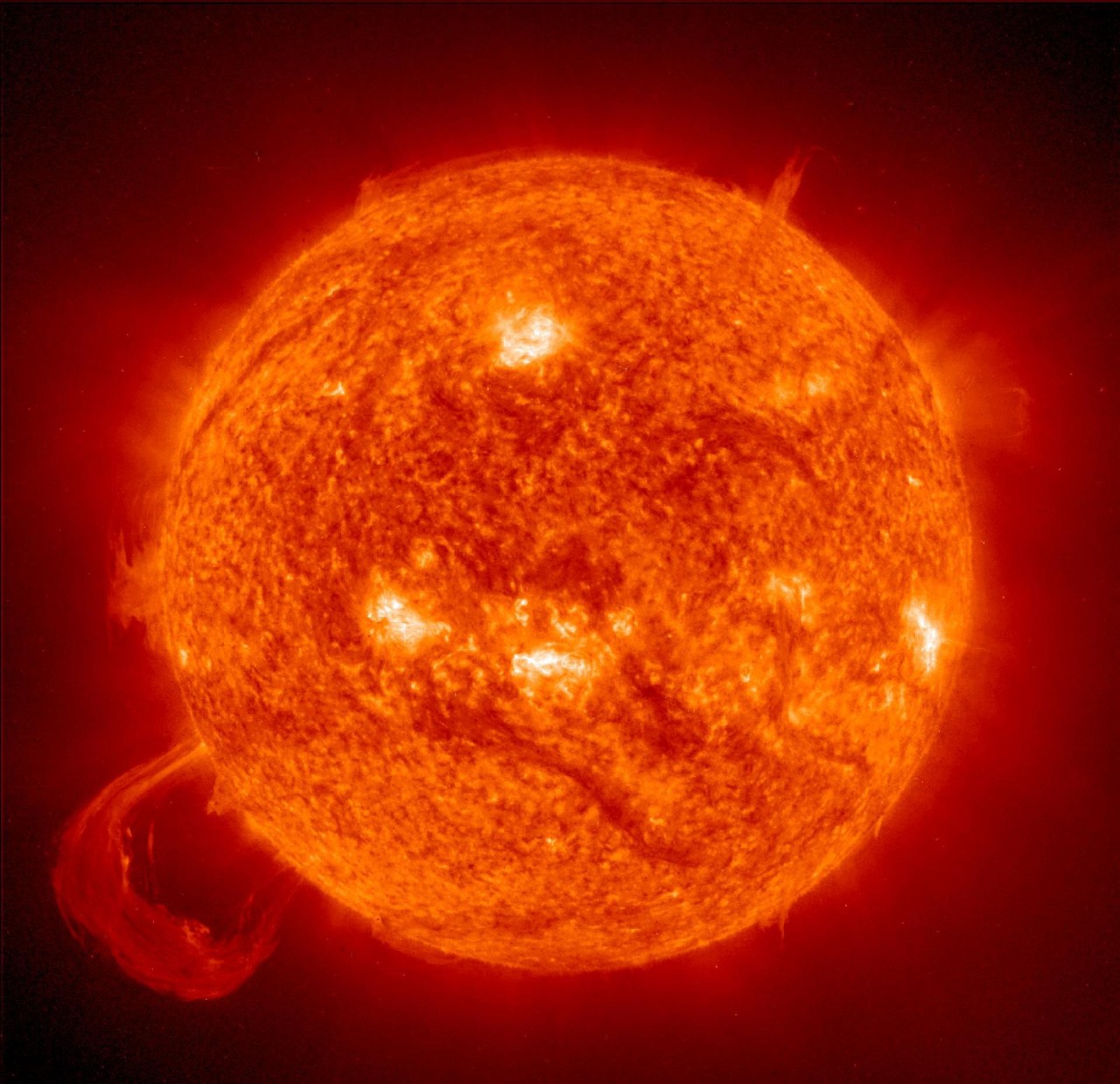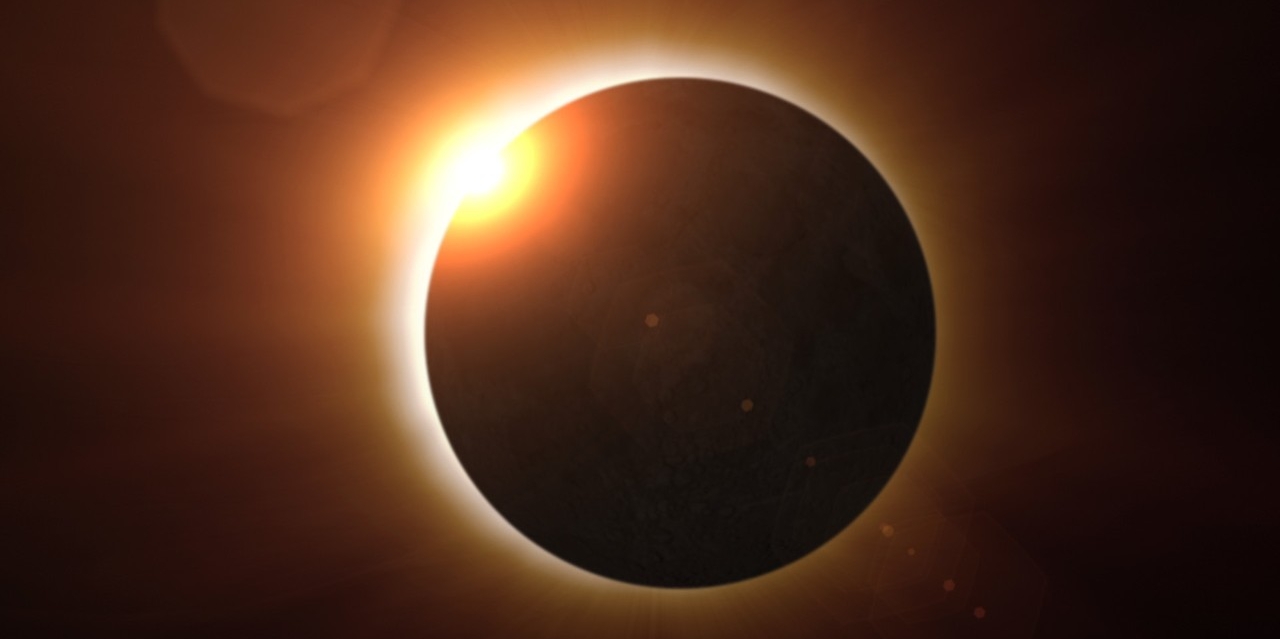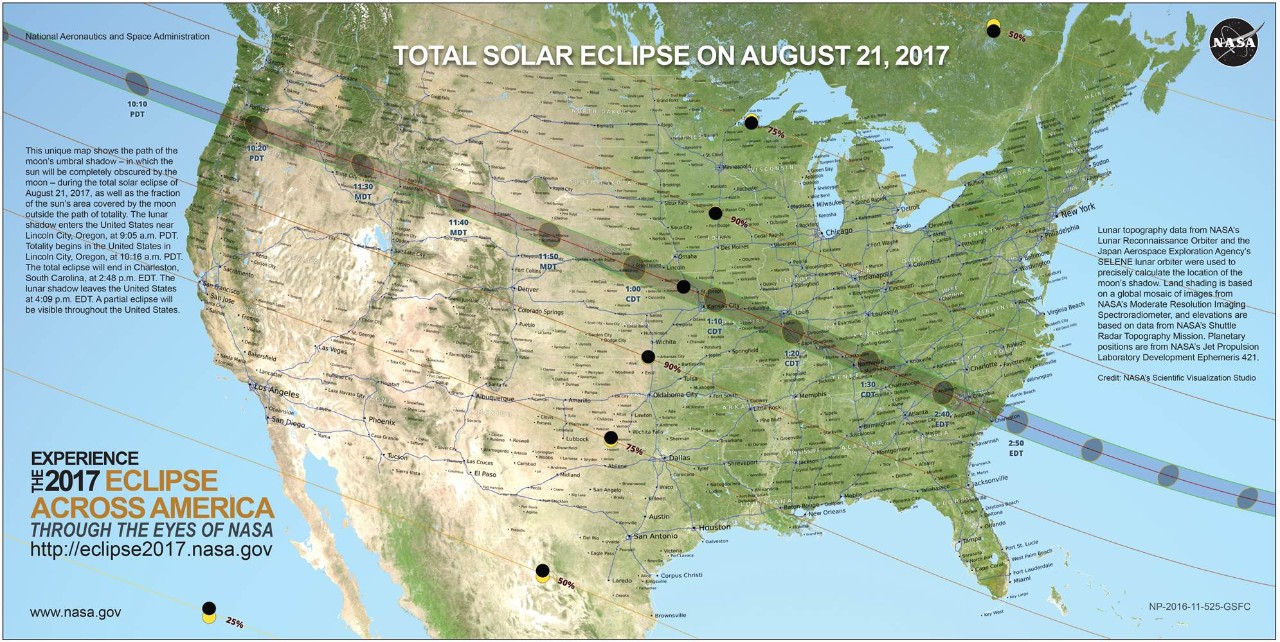Darkness falls
UC physicists are traveling across the country to witness Monday's solar eclipse. But the galactic show from campus should be equally unforgettable.
By Michael Miller
513-556-6757
Aug. 15, 2017
As if the first day of school weren’t special enough, the University of Cincinnati’s campus will witness a near-total eclipse of the sun on Monday.
Some astronomers at UC are traveling to view the eclipse in its path of totality, which stretches across the continent from Oregon to South Carolina. It’s the first total eclipse of the sun observed in the United States since 1979.
From UC’s campus, the eclipse will be at its peak around 2:30 p.m.
Physics professor Michael Sitko in UC's McMicken College of Arts & Sciences warns that it won't be safe to view without protective glasses.
He and some friends traveled to Winnipeg to see a total eclipse in 1979 while they were in graduate school in Wisconsin. It was one of the most incredible natural phenomena he's ever witnessed, he said.
"It was just awe-inspiring," he said. "It was February, and we accidentally drove off the road. But it was worth it. It was a real adventure."
UC adjunct professor of physics Davin Flateau plans to travel to the antelope bluffs of Wyoming to greet the eclipse.
“The chances for good weather are much better out West,” he said. “Astronomers are gathering in Casper, Wyo., for a large astronomical convention. I’m taking my family out there. It should be a great time.”
Aptly enough, he is teaching a class on the solar system at UC this fall.
“It’s a good way to start off the school year,” he said.
Solar eclipses take place about every 18 months on average, UC physics professor Colin Bischoff said. But seeing one in totality often requires traveling to another hemisphere.
“It’s nice having this one passing so close to us,” he said. “Even for people who can’t travel to western Kentucky or Tennessee, we’ll get a partial eclipse of more than 90 percent. It will get noticeably darker for several minutes.”
He and other members of the UC Physics Department plan to observe the eclipse from campus outside their offices in Braunstein Hall. He plans to put together a little pinhole projector to observe the eclipse safely. These can be assembled by taping a piece of white paper and aluminum foil to opposite ends of the inside of a cardboard box.
“I’ve never seen a solar eclipse before. I’m pretty excited,” he said.
The eclipse can have a surprising effect on wildlife, according to UC biology professor George Uetz. He traveled to the rainforests of Mexico’s Veracruz to study colonical orb-weaver spiders as part of a research project funded by National Geographic. He had an opportunity to examine the effects of the 1991 total solar eclipse on their behavior.
“Everything happened simultaneously at the moment of totality,” he said. “Night moths came out of the trees. Birds frantically rushed back to their roosts and nests. Dogs in the nearby village were howling and barking.”
In the dim light, they spied a nocturnal bobcat hunting near the road. And in the darkness, the spiders he came to study began dismantling their webs.
“Their sticky orb web gets covered in pollen and dust. It becomes less efficient at capturing prey so at night they take it down,” he said.
The spiders were still taking their webs down when the sun began to peek past the moon. As the light increased, the spiders just as quickly began rebuilding their webs, he said.
The researchers tried to replicate the behavior-altering effects of an eclipse by bathing some of the spider colonies with floodlights during the eclipse. Uetz said the spiders apparently were triggered only by the presence or absence of the sun’s ultraviolet rays. The study was published in the journal Ethology.
Uetz said there is still much to learn about the effects a solar eclipse has on wildlife behavior. He will not forget the experience of standing in a tropical rainforest as it transformed from day to night back to day.
"It was awe-inspiring," he said.
Matt Brady captured the shadows cast by a solar eclipse through the trees in California in 2012.
UC physics professor Margaret Hanson, associate dean of UC’s McMicken College of Arts & Sciences, is traveling to Nebraska to watch the eclipse from a Mobile Earth and Space Observatory designed by a former classmate of hers. The mobile lab will educate high school and middle school students in Sutton, Nebraska, during the big event.
While she is most excited about seeing an eclipse in totality, Hanson said she also will pay attention to how the eclipse will appear in the shadows of trees, projected like pinhole cameras from tiny holes in the caterpillar-eaten leaves. YouTube is full of videos portraying this startling effect.
“Every little hole casts a tiny image of the sun, little half-moon images. It looks really cool,” she said.
Astrophysics is getting a lot of attention this week because of the eclipse. But interest in physics has exploded in the past 10 years, Hanson said. Enrollment in UC’s physics program has doubled since 2006 to more than 120 students last year, including nearly 50 in astrophysics.
She thinks the hit TV show “The Big Bang Theory” helped to popularize physics and make its subject matter more relatable. The show, in its 11th season, is about three physicists and an engineer who often collaborate on projects and misadventures at Caltech.
The show prides itself in verisimilitude with a particle physicist who advises on scripts and props. The whiteboards that appear in the show’s home and office sets feature real equations related to the work of the fictional characters. Scientists such as Stephen Hawking and Nobel laureate George Smoot have made guest appearances.
“It’s the ‘Big Bang Theory’ theory,” Hanson said. “My only regret was that none of the four main characters is a woman.”
Astrophysics will take center stage at UC again on Sept. 8 when NASA’s former chief science officer visits for a lecture on the New Horizons space probe. New Horizons director Alan Stern, another former classmate of Hanson’s, will talk about the spacecraft mission to Pluto that is changing how we think about the distant planet (3 p.m. Sept. 8 at Tangeman University Center’s Great Hall).
And for those who will be in a different hemisphere on Monday, take heart. Ohio will see another solar eclipse in just seven years.

The European Space Agency's SOHO spacecraft captured this image of the sun in 1999 using NASA's Extreme Ultraviolet Imaging Telescope. ESA/NASA/SOHO
Space Exploration
Do you have an explorer's spirit? UC graduates are contributing each year to our knowledge of the universe. Check out UC's astrophysics program or other undergraduate or graduate programs.


